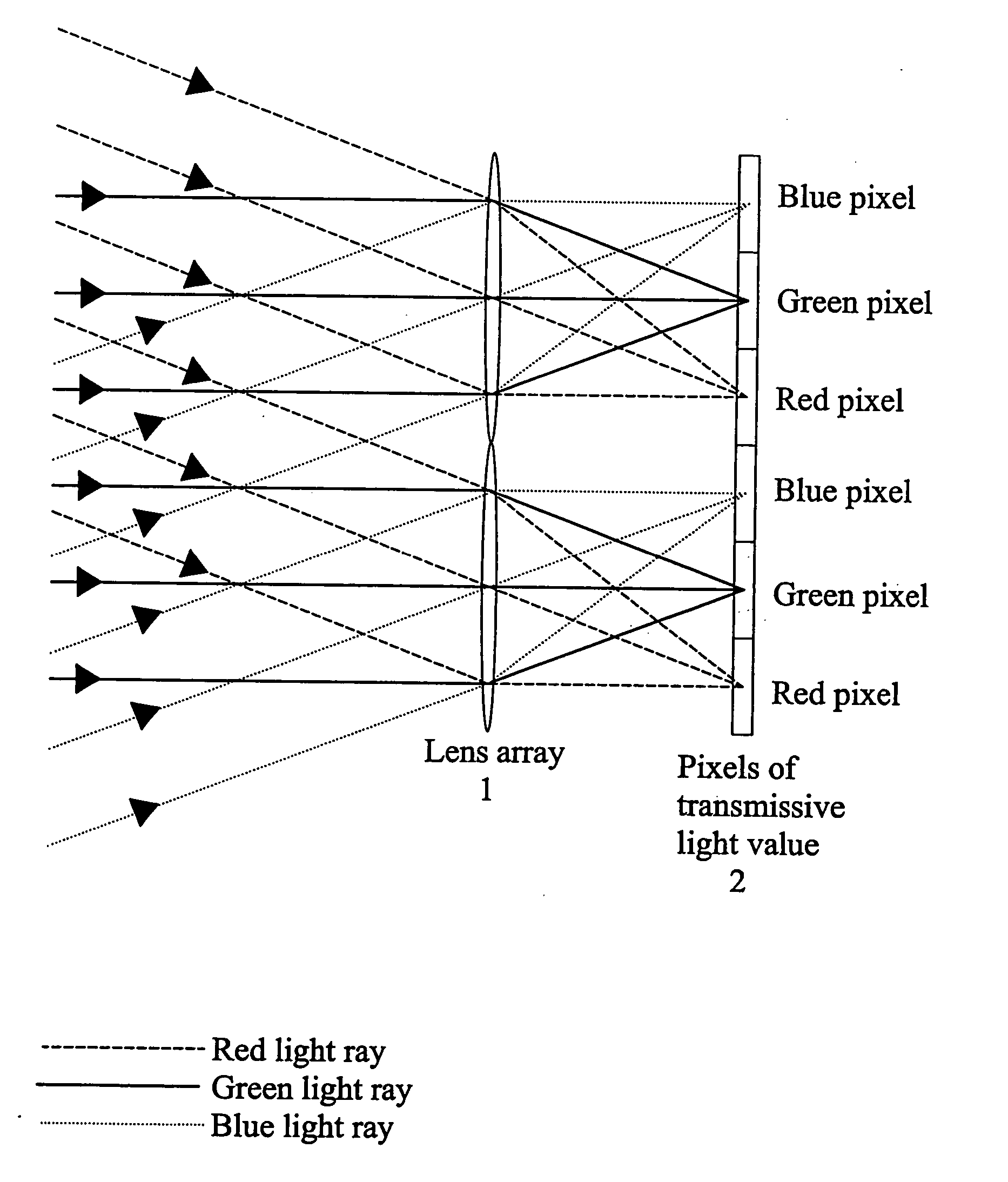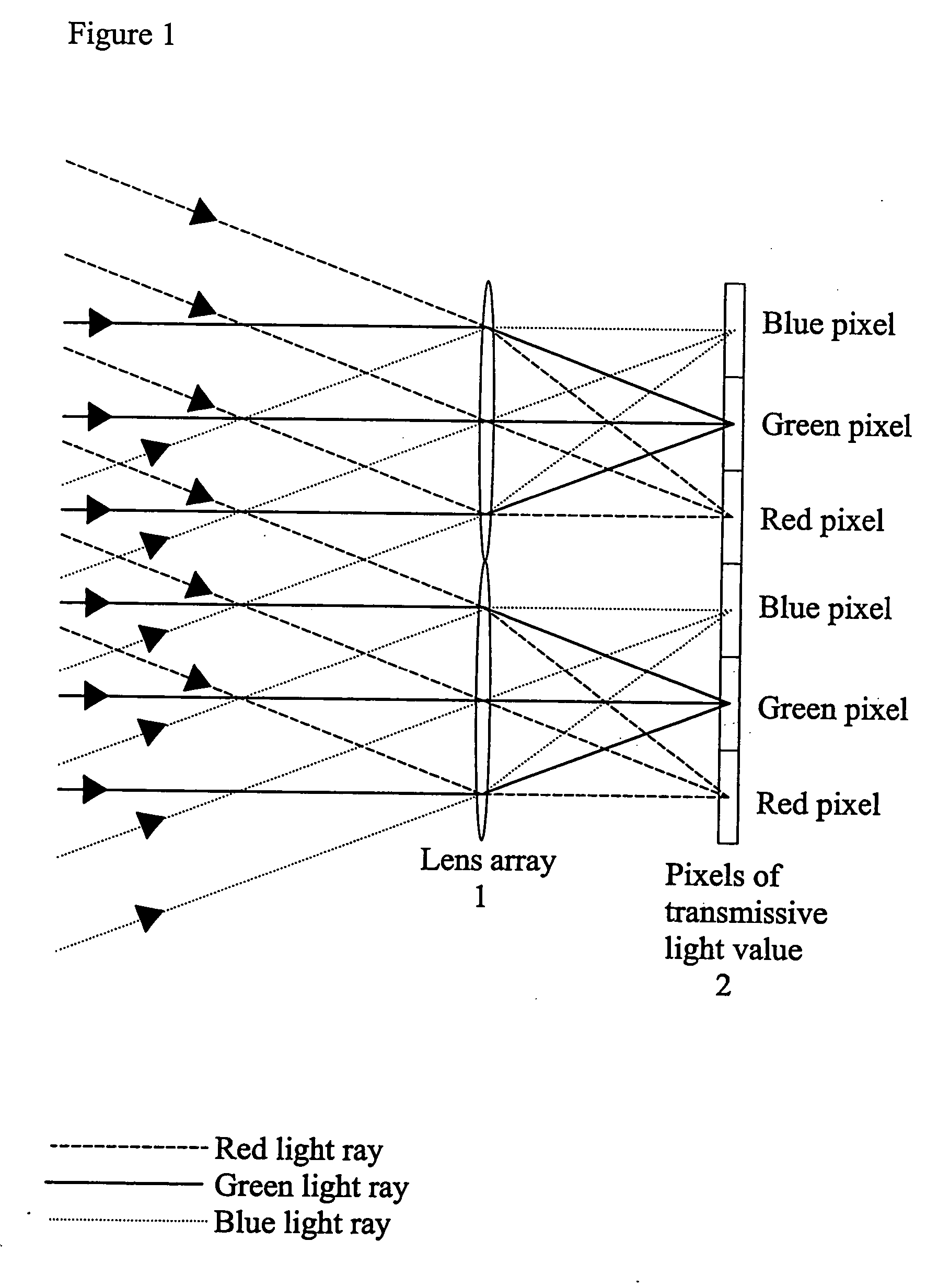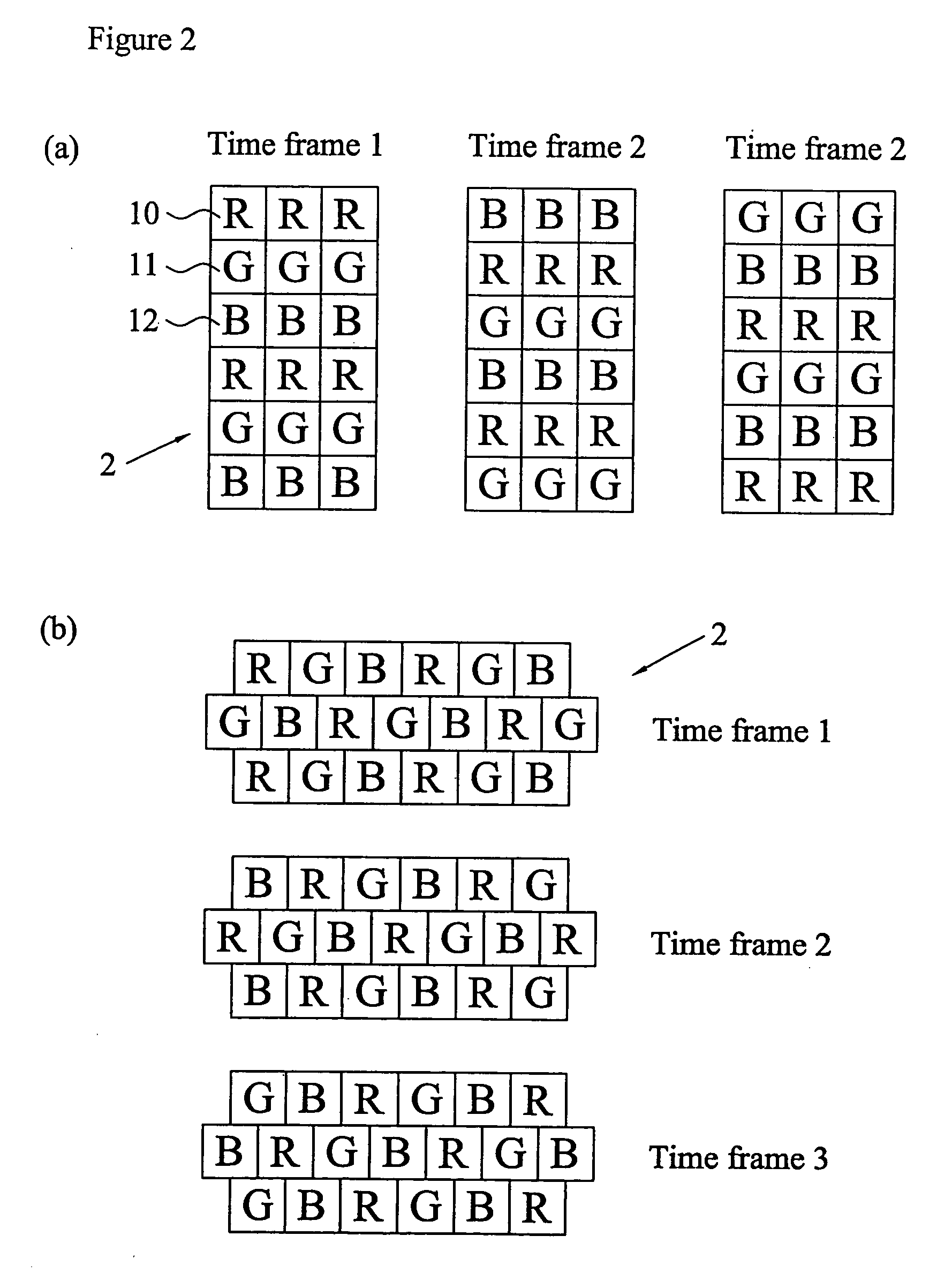Time-sequential colour projection
a colour projector and time-sequence technology, applied in the field of time-sequence colour projectors, can solve the problems of increasing the high cost of the system, and low optical efficiency of the projector, and achieves the effects of low cost, reduced visibility of flicker and colour artefacts, and high illumination efficiency
- Summary
- Abstract
- Description
- Claims
- Application Information
AI Technical Summary
Benefits of technology
Problems solved by technology
Method used
Image
Examples
Embodiment Construction
[0073] Like reference numerals refer to like parts throughout the drawings.
[0074] As described hereinbefore, FIG. 1 illustrates part of the light path in a known type of angular colour projector. The red light path is illustrated by the broken lines, the green light path by the solid lines and the blue light path by the dotted lines. Red, green and blue light rays are incident on a lens array 1 at different angles or in different angular ranges. The lens array 1 is disposed in front of the pixels of a transmissive light valve 2, such as a liquid crystal device. The pitch of the lens array 1 is substantially equal to three times the pitch of the light valve pixels 2 with each lens of the array 1 being aligned with three pixels or three rows of pixels of the light valve. Light incident on the lens array 1 is substantially collimated and the pixels of the light valve are disposed substantially in the focal plane of the lens array 1. Thus, the red, green and blue light rays are focused...
PUM
 Login to View More
Login to View More Abstract
Description
Claims
Application Information
 Login to View More
Login to View More - R&D
- Intellectual Property
- Life Sciences
- Materials
- Tech Scout
- Unparalleled Data Quality
- Higher Quality Content
- 60% Fewer Hallucinations
Browse by: Latest US Patents, China's latest patents, Technical Efficacy Thesaurus, Application Domain, Technology Topic, Popular Technical Reports.
© 2025 PatSnap. All rights reserved.Legal|Privacy policy|Modern Slavery Act Transparency Statement|Sitemap|About US| Contact US: help@patsnap.com



